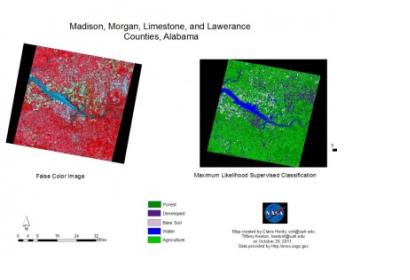The April 27, 2011, tornado outbreak was the second-deadliest in U.S. history, and the deadliest since the Doppler Radar system has been used to warn communities. Alabama has been involved in six of the 10 deadliest tornado outbreaks in U.S. history. Studies on tornadogenesis and tornado paths have found that the occurrence of tornadoes within Tornado Alley is not entirely random and that environmental factors may contribute to where tornadoes may form and what direction they may travel. Terrestrial environmental parameters such as land use/land cover, vegetation, soil profiles, topography and other surface features need to be explored for their role in the development of tornadoes. This information is crucial for disaster management. NASA EOS can provide historical data on environmental parameters and tornadoes to study these associations retrospectively. In the current project, we propose to use remotely sensed data from Landsat and ASTER satellites to evaluate the association between terrestrial environmental parameters and the occurrence of tornadoes in Alabama between 1974 and 2011. Based on the results of our analysis, we will expand this project to examine the role of other factors, including meteorological variables, in tornadogenesis. Findings will be used for outreach activities in the general community including the academic and service sectors.
For more information you can find the poster presentation under the source link

